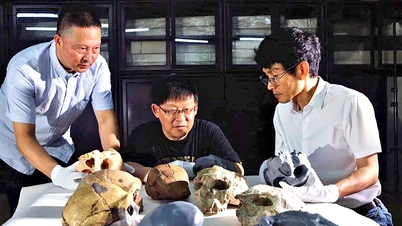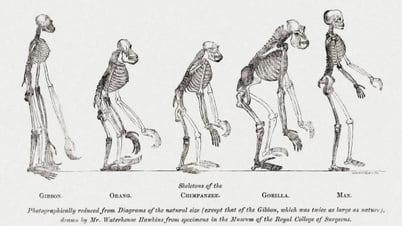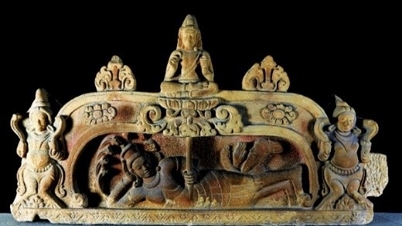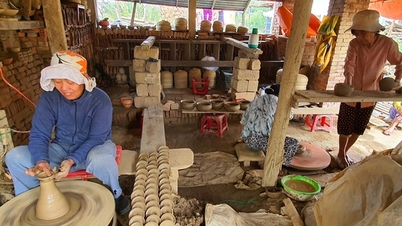(CLO) Recent studies on chimpanzees have recorded behaviors that are surprisingly similar to human ancestors, thereby revealing how we used tools in the past.
According to research published in the Journal of Human Evolution, the way one group of apes selected stones for tools has remarkable similarities with hominids – early human ancestors who are believed to have created Oldowan stone tools.

Chimpanzees have many human-like characteristics: Illustration: GI
Oldowan tools, dating from 2.9/2.6 million to 1.7 million years ago, are among the first tools used by early hominins. However, there is evidence that tool use occurred even earlier.
Research shows that tool use is a very basic hominin trait. However, chimpanzees, our closest relatives, not only use tools but also demonstrate the ability to select tools based on physical properties such as size and weight.
This shows interesting parallels with research on Oldowan tools, where our ancestors also meticulously selected stones based on certain characteristics.
In the latest study, scientists focused on how chimpanzees in Bossou, Guinea, select stones as nut-cracking tools. This group of apes is known for its unique tool use, particularly using stones as hammers and anvils to crack open oil palm nuts.
"We wanted to understand how chimpanzees select stones for tools, especially when they encounter new types of stones. We hope this will help us better understand how our human ancestors developed the ability to use tools," said study author David Braun.
To do this, the team collected rocks from western Kenya, where there is a great diversity of rock types, and shipped them to Guinea. “We did mechanical tests on these rocks, so we knew that many of the rocks looked similar but had different mechanical properties,” says Braun.
The researchers then randomly placed rocks and observed which rocks they chose. "We were particularly interested in comparing the frequency of use of a particular rock type with its frequency of occurrence. We started with two rocks with completely different properties, and then gradually added other rocks to see if they could distinguish the small differences," Braun said.
They discovered that they didn’t just use any stone, but also had the ability to differentiate between the hardness of the stone to suit each task. For example, they preferred to use soft stones as anvils to hold seeds tightly and hard stones as hammers to create a strong impact force, helping to crack seeds more effectively.
After six weeks, they selected the stones best suited for cracking nuts, sometimes by trial and error, sometimes by imitating others.
The way chimpanzees choose is very similar to what has been recorded in archaeological records from more than 2 million years ago. Our ancestors may have used a similar trial-and-error method to choose the most suitable stone.
Early humans may have learned to use tools effectively by observing and imitating each other, not all of whom needed to understand the mechanical properties.
This ability to learn from others is one of human "superpowers" and it seems chimpanzees have it too.
“We often think of tools as what sets us apart from other animals, but in fact, tool use and learning from others seems to be a common trait across primates,” says author David Braun.
Ha Trang (according to JHE, Newsweek, GI)
Source: https://www.congluan.vn/nghien-cuu-hanh-vi-cua-tinh-tinh-he-lo-qua-trinh-tien-hoa-cua-con-nguoi-post329430.html




![[Photo] Prime Minister Pham Minh Chinh receives President of Cuba's Latin American News Agency](/_next/image?url=https%3A%2F%2Fvphoto.vietnam.vn%2Fthumb%2F1200x675%2Fvietnam%2Fresource%2FIMAGE%2F2025%2F12%2F01%2F1764569497815_dsc-2890-jpg.webp&w=3840&q=75)







































































































Comment (0)